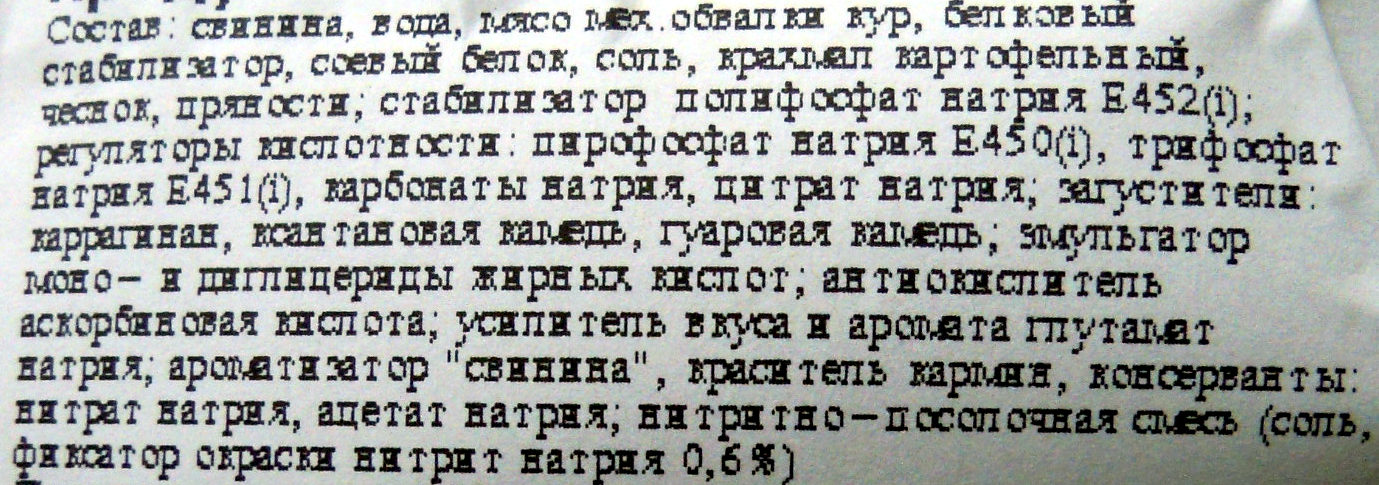Сардельки Докторские варёные н/о - Егорьевская - 400 g
This product page is not complete. You can help to complete it by editing it and adding more data from the photos we have, or by taking more photos using the app for Android or iPhone/iPad. Thank you!
×
Barcode: 4607104819987 (EAN / EAN-13)
Common name: Сардельки Докторские варёные н/о
Quantity: 400 g
Packaging: Plastic, Other-plastics
Brands: Егорьевская
Categories: Meats and their products, Meats, Prepared meats, Sausages, ru:Сардельки
Labels, certifications, awards: EAC, ru:ТУ 9213-001-56707355-11, ru:Упаковано в день изготовления, ru:Упаковано под вакуумом
Stores: Авоська
Countries where sold: Russia
Matching with your preferences
Environment
Packaging
Transportation
Report a problem
Data sources
Product added on by bleakpatch
Last edit of product page on by packbot.
If the data is incomplete or incorrect, you can complete or correct it by editing this page.









